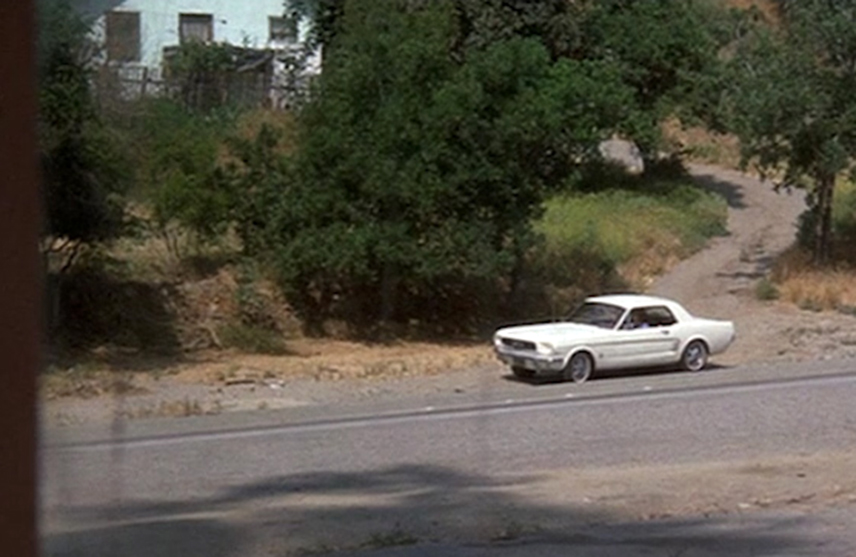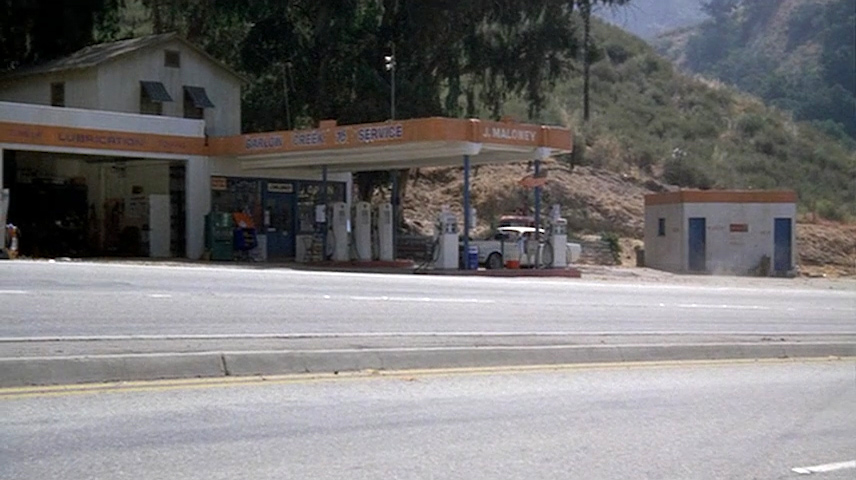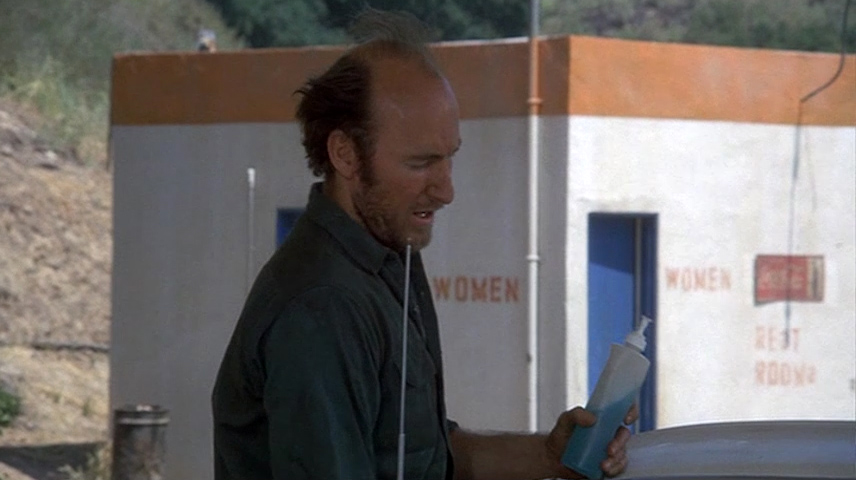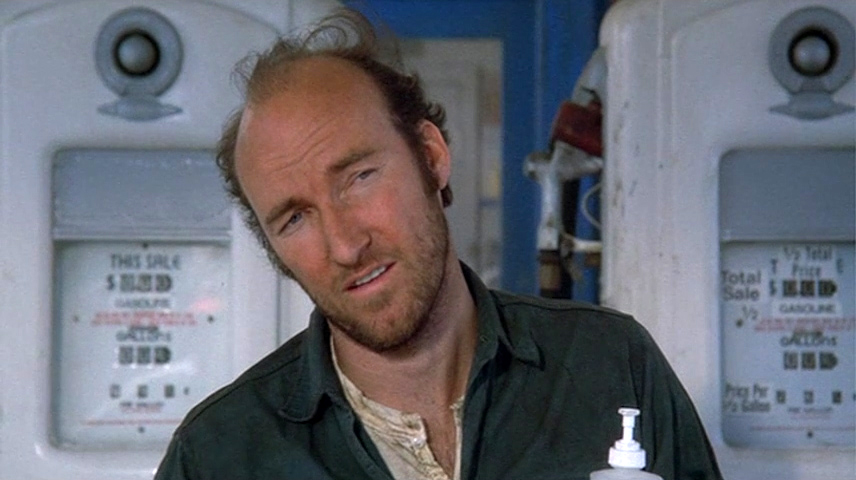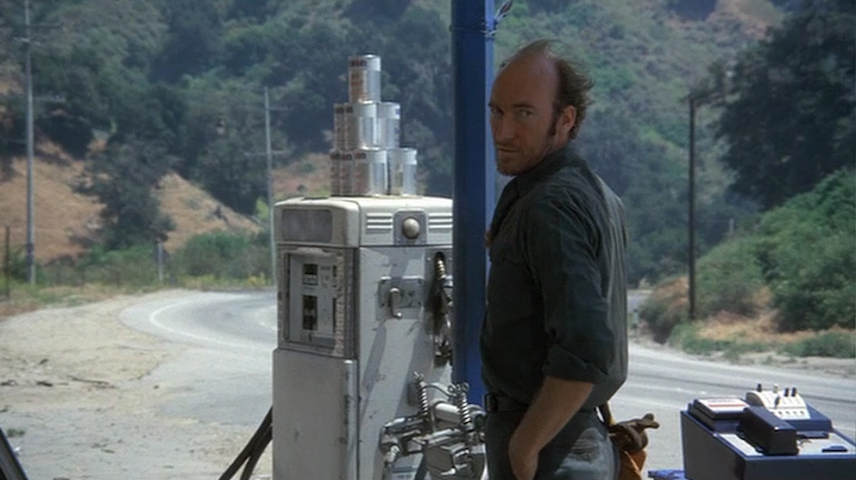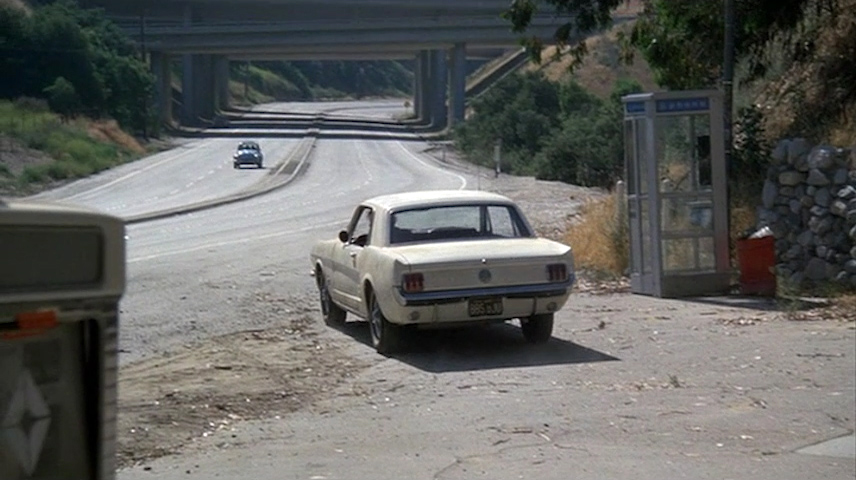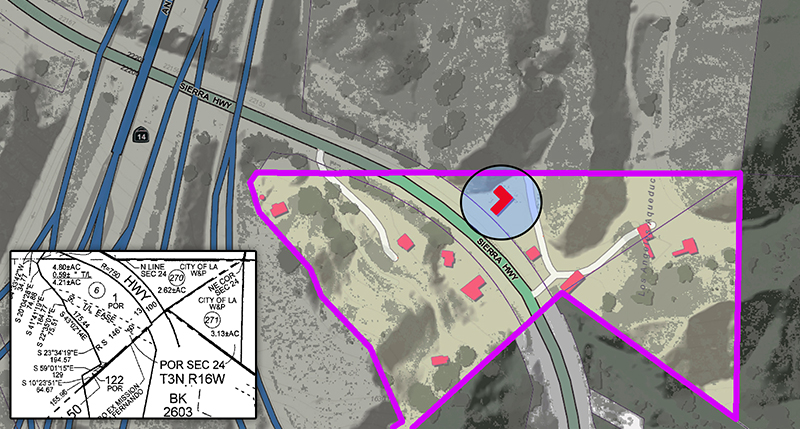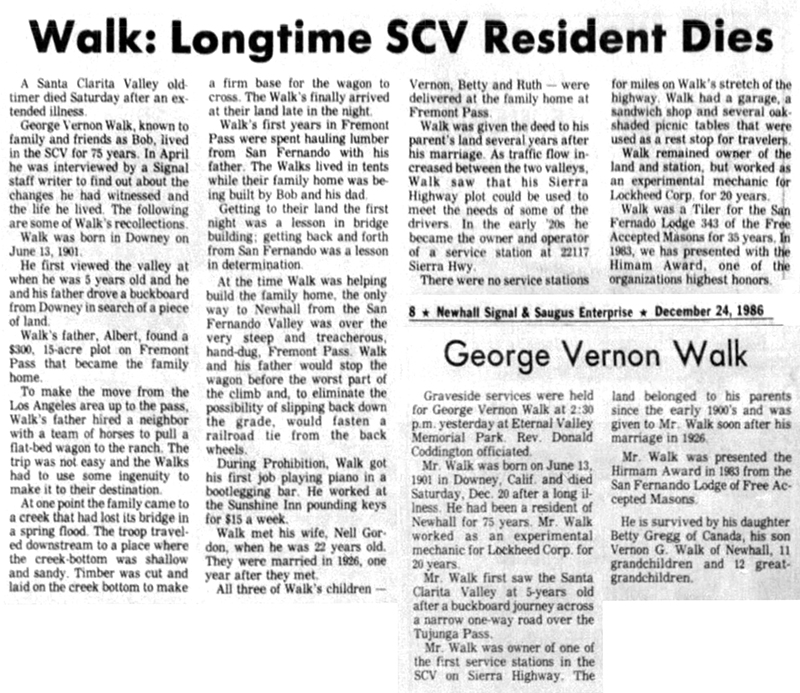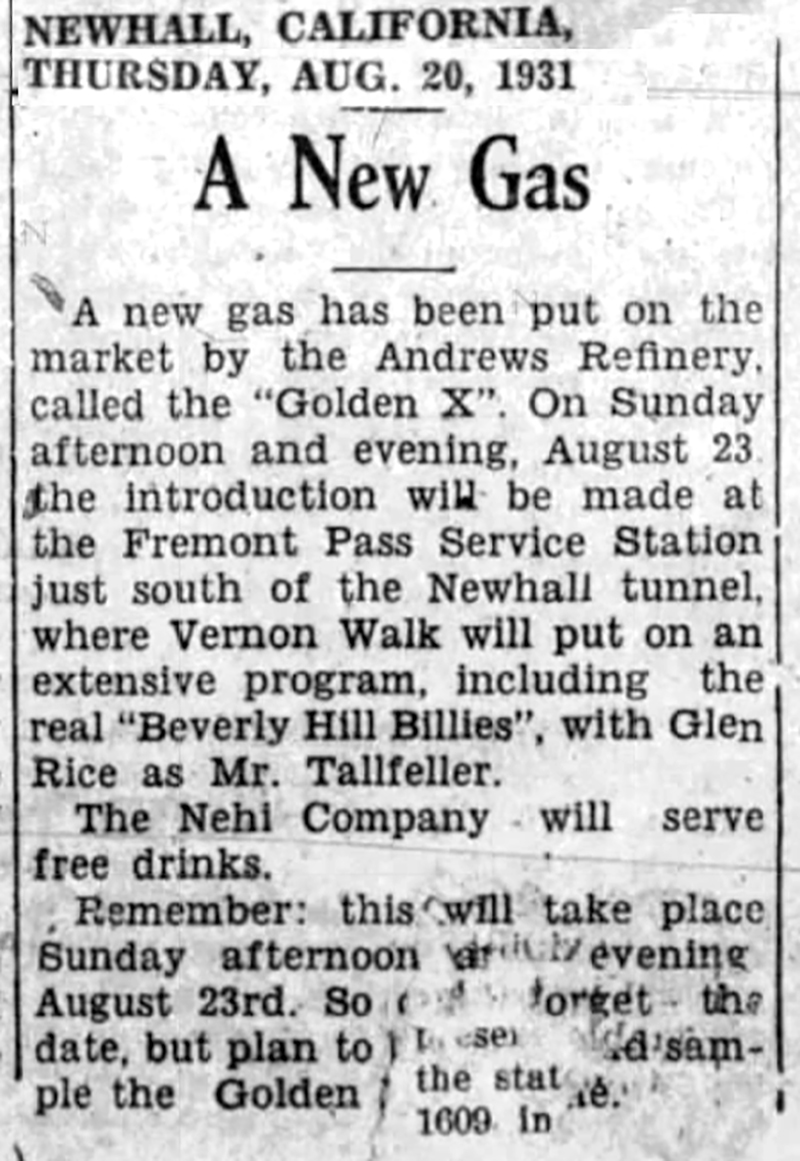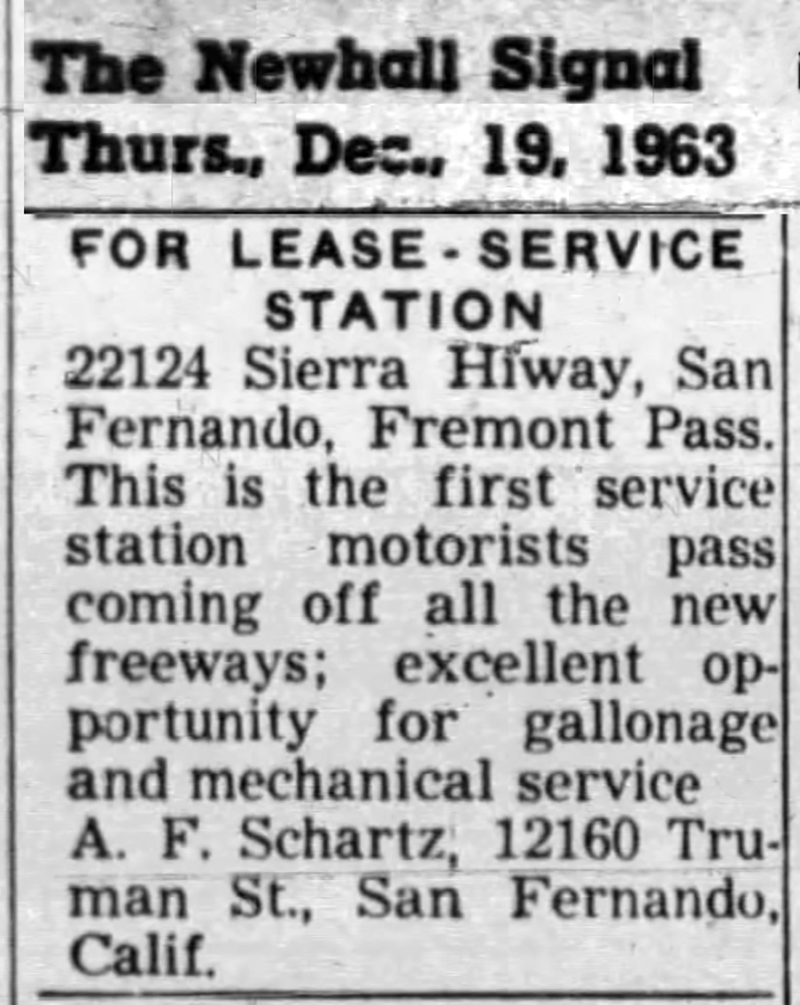|
|

|
The Fremont Pass Service Station at the south end of the Newhall Pass was still a functioning gas station when director Alfred Hitchcock used it for a scene featuring Bruce Dern and Ed Lauter in his final feature film, "Family Plot" (Universal Pictures 1976). Hitchcock gives us a rare glimpse of the old Walk family home on the west side of the highway (22127 Sierra) at the beginning of this clip and the separate restroom facility next to the service station on the east side (22124 Sierra). The structure that looks like a 2-story building behind the service station is a façade. Principal filming took place from May 12-August 18, 1975.
George Vernon "Bob" Walk — grandfather of 1980 World Series Pitcher Robert Vernon "Bob" Walk (Hart High 1974) — started the Fremont Pass Service Station on 15 acres of land he received as a wedding present in 1926 from his father, Albert B. Walk of San Fernando (see below). The young couple, George and Nell (Gordon), made their home on the property, which straddled U.S. Highway 6 below the Newhall Tunnel. It was prime real estate for a gas station, as every motorist traversing the Newhall Grade had to drive by it — even after the tunnel was cut away and the road widened in 1938 to form the current Sierra Highway. The station featured a garage, sandwich shop and picnic tables. After operating the station himself for many years, he leased it to independent operators and went to work for Lockheed as an experimental mechanic. All good things must come to an end. The fate of the service station was sealed when the state started drawing up plans for major road improvements in the Newhall Pass. Maybe they saw the handwriting on the wall, for the Walk family sold the property at an ideal time in 1959. The early 1960s brought construction of two big, new freeways — Interstate 5 replacing Highway 99 on the west, State Route 14 bypassing Sierra Highway on the east. Cut off from most traffic, the service station that was once an obvious choice was relegated to the role of an emergency pit stop for motorists who didn't plan ahead. Seeking an operator in 1963, its new owner advertised it as an "excellent opportunity" because it was the "first service station motorists pass coming off all the new freeways." The trouble was, most motorists didn't exit there. The station limped along under the Mobil and then Texaco brand names until the late 1970s, after which it became home to a string of short-lived businesses — everything from a detective agency to a would-be nightclub. It was probably a specialty automotive shop when "Halloween III" was in production. The city of Los Angeles Department of Water and Power purchased the eastern half of the property (with the gas station) in the early 2000s. When the property went on the market in 2000, it consisted of three parcels: the original service station on 2.62 acres on the east side of the highway (22124 Sierra) and an adjacent 3.13-acre parcel east of Sierra Highway zoned for agricultural use; and a second service station and the old Walk family home (22127 Sierra) on 4.8 acres west of the highway. Assessor records show a 1,467-square-foot structure (presumably the house, built in 1920 and remodeled in 1928) and a 528-square-foot structure (presumably the second gas station, built in 1939) on the western parcel. As of 2019, the western parcel remains in private hands.
|
The site owner makes no assertions as to ownership of any original copyrights to digitized images. However, these images are intended for Personal or Research use only. Any other kind of use, including but not limited to commercial or scholarly publication in any medium or format, public exhibition, or use online or in a web site, may be subject to additional restrictions including but not limited to the copyrights held by parties other than the site owner. USERS ARE SOLELY RESPONSIBLE for determining the existence of such rights and for obtaining any permissions and/or paying associated fees necessary for the proposed use.
